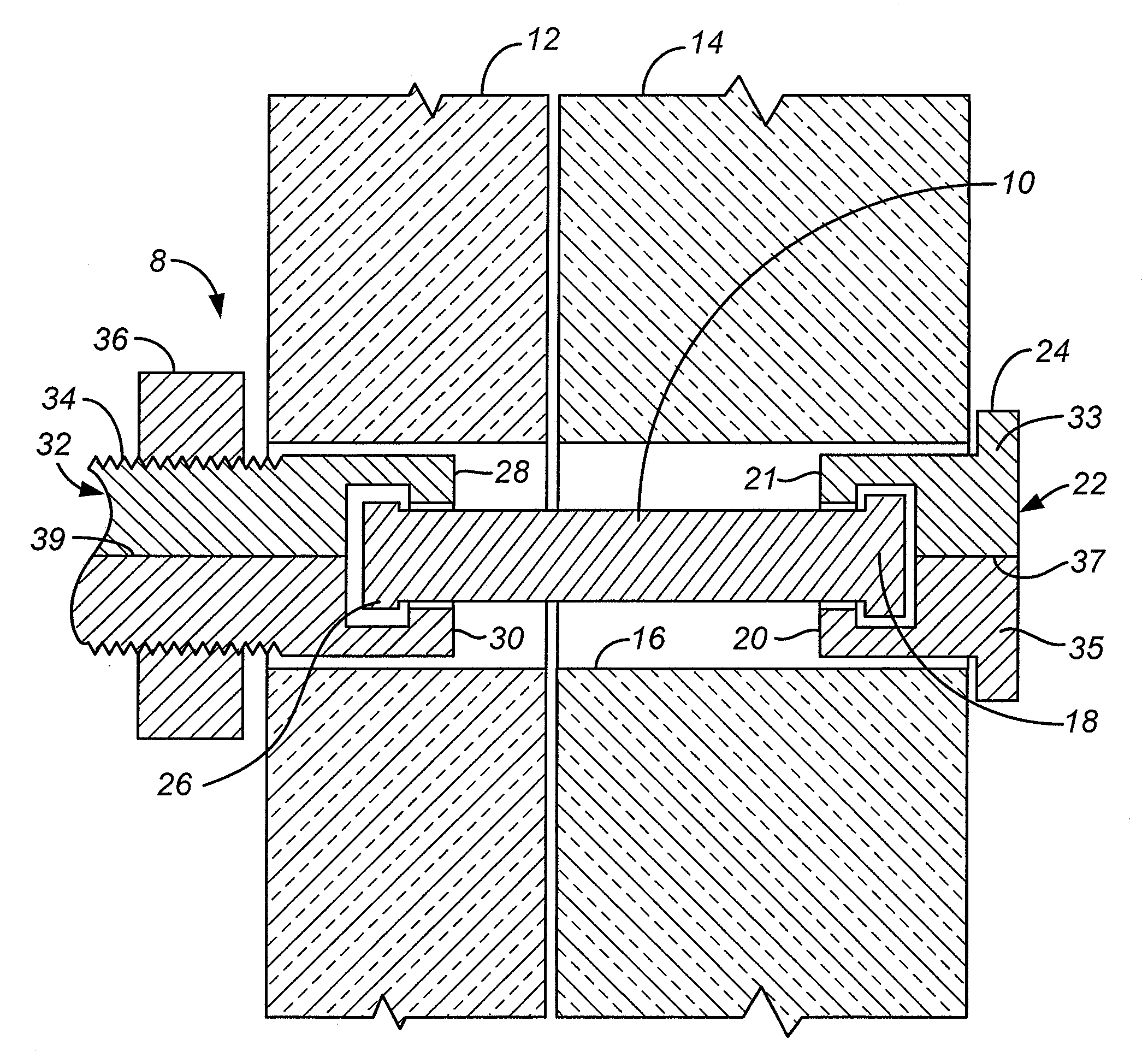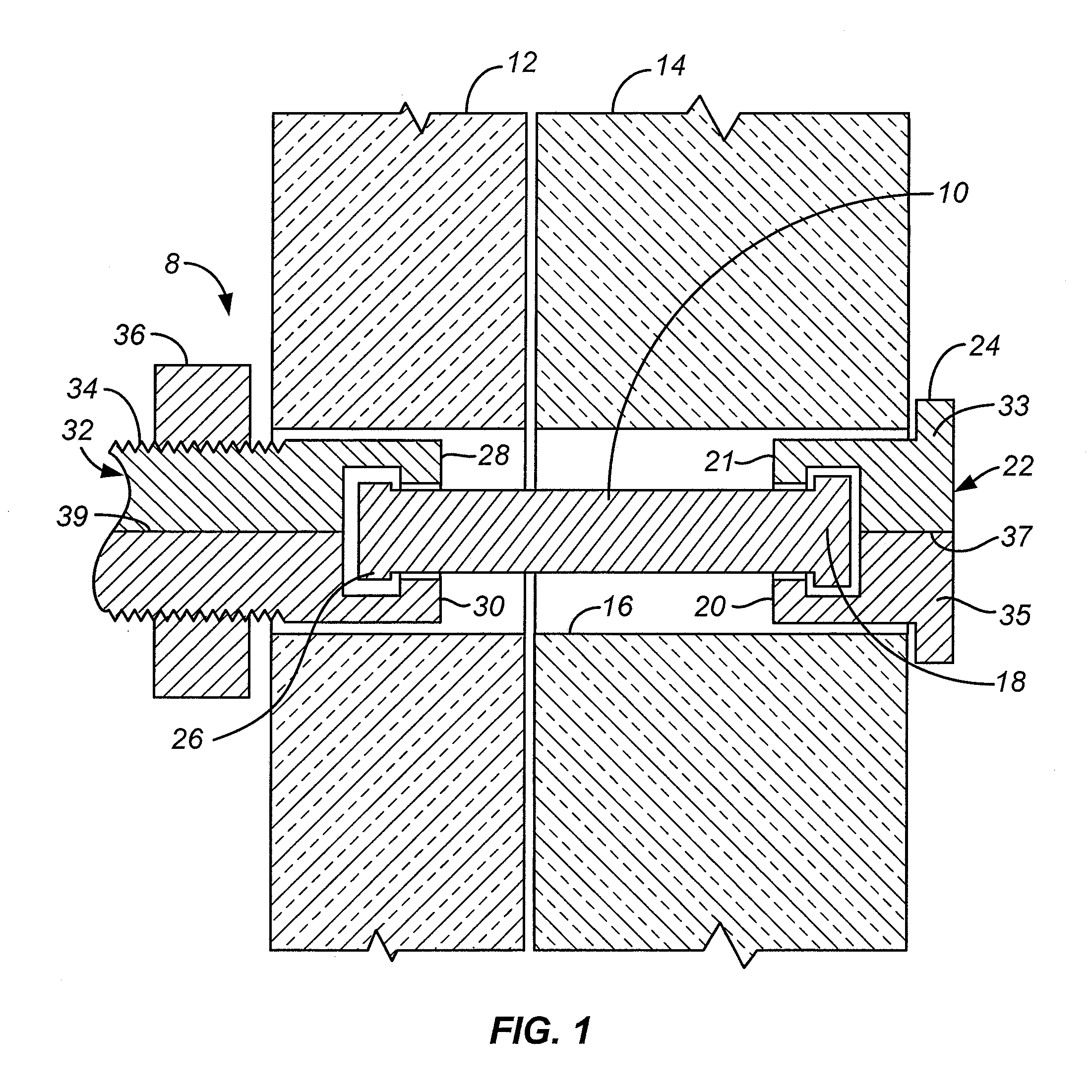Constant load fastener
a constant load and fastener technology, applied in the direction of fastening means, securing devices, screws, etc., can solve the problems of slipping, tendency to lose tension, and application of this method
- Summary
- Abstract
- Description
- Claims
- Application Information
AI Technical Summary
Benefits of technology
Problems solved by technology
Method used
Image
Examples
Embodiment Construction
[0030]In general, the fasteners described herein include a hyperelastic shaft that is configured to receive the fastening load generated when the fastener secures two or more structures together. The fasteners also include a retainer coupled at each end of the hyperelastic shaft. The retainers typically connect to, and retain the structure(s) to be fastened by the fastener. The retainers therefore include one or more load bearing surface that is configured to contact a structure to be retained. The two retainers couple to the ends of the shaft and transfer the load to the shaft. These retainers do not typically directly contact each other, but are connected by the shaft.
[0031]The hyperelastic shaft is typically a shape memory alloy (SMA) shaft that is fabricated as a single crystal. Single crystal SMAs are defined herein as “hyperelastic” because they can undergo recoverable distortions that are much larger than can be achieved by conventional materials. Such distortions are greater...
PUM
 Login to View More
Login to View More Abstract
Description
Claims
Application Information
 Login to View More
Login to View More - R&D
- Intellectual Property
- Life Sciences
- Materials
- Tech Scout
- Unparalleled Data Quality
- Higher Quality Content
- 60% Fewer Hallucinations
Browse by: Latest US Patents, China's latest patents, Technical Efficacy Thesaurus, Application Domain, Technology Topic, Popular Technical Reports.
© 2025 PatSnap. All rights reserved.Legal|Privacy policy|Modern Slavery Act Transparency Statement|Sitemap|About US| Contact US: help@patsnap.com



